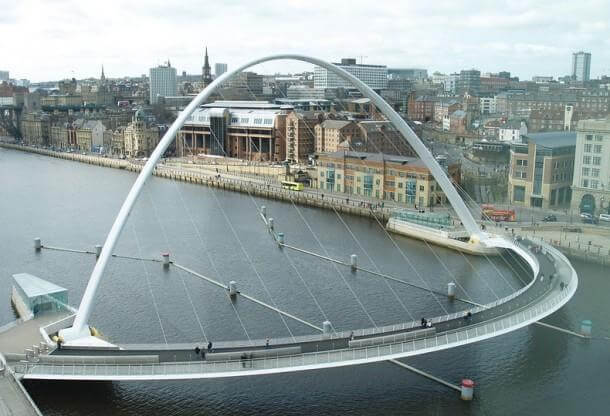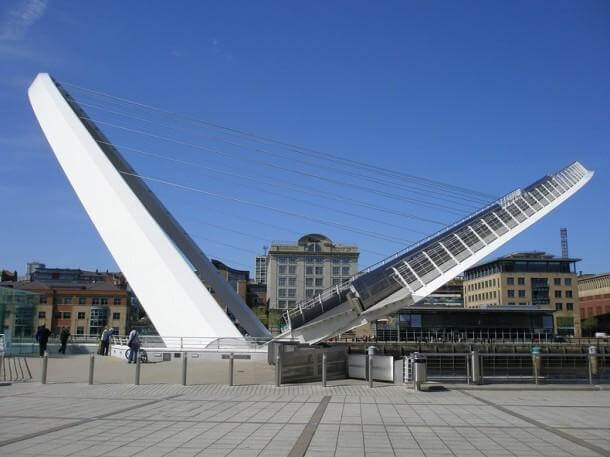 So what happens when you combine Engineering and limitations? Engineers are usually accustomed to thinking out of the box but every once in a while they tend to come up with something quite magnificent and legendary, such as; The Gateshead Millennium Bridge. The Bridge has been constructed upon River Tyne in England and is different from other bridges in a very unique way. We have Gateshead’s Quays arts quarter at the south bank while Quayside of Newcastle on the north bank.
So what happens when you combine Engineering and limitations? Engineers are usually accustomed to thinking out of the box but every once in a while they tend to come up with something quite magnificent and legendary, such as; The Gateshead Millennium Bridge. The Bridge has been constructed upon River Tyne in England and is different from other bridges in a very unique way. We have Gateshead’s Quays arts quarter at the south bank while Quayside of Newcastle on the north bank.

 Bridge itself is essentially an assembly of two peculiar curves. One of these curves serves as the deck while the other supports it via cables. The idea was to entertain pedestrians and cyclists while also entertaining the ships that make use of river. So whenever a ship needs to pass through, the whole bridge rotates as a single assembly where both curves counter-balance each other as one rises up and the other drops down to give way to ships. These curves, parabolic in nature, extend the crossing distance of 105 meters to almost 120 meters providing an adequate length for the clearance above water.
Bridge itself is essentially an assembly of two peculiar curves. One of these curves serves as the deck while the other supports it via cables. The idea was to entertain pedestrians and cyclists while also entertaining the ships that make use of river. So whenever a ship needs to pass through, the whole bridge rotates as a single assembly where both curves counter-balance each other as one rises up and the other drops down to give way to ships. These curves, parabolic in nature, extend the crossing distance of 105 meters to almost 120 meters providing an adequate length for the clearance above water.
 The Bridge is also known as ‘Blinking/Winking Eye’ because of the way it looks when it is in motion. Stylish and elegant are the words used to describe the motion of this bridge and watching it work is always a great view to look at. The operation of the bridge requires the use of six 45 cm diameter Hydraulic rams, equally distributed and each requiring the power of a 55kW electric motor to function. The bridge rotates a total of 40 degrees and it takes around 4.5 minutes to complete the rotation,though wind speed has a say in this time too.
The Bridge is also known as ‘Blinking/Winking Eye’ because of the way it looks when it is in motion. Stylish and elegant are the words used to describe the motion of this bridge and watching it work is always a great view to look at. The operation of the bridge requires the use of six 45 cm diameter Hydraulic rams, equally distributed and each requiring the power of a 55kW electric motor to function. The bridge rotates a total of 40 degrees and it takes around 4.5 minutes to complete the rotation,though wind speed has a say in this time too.



 The bridge has won quite a number of awards over its design including the architects Wilkinson Eyre, the 2002 Royal Institute of British Architects (RIBA) Stirling Prize, the 2003 Gifford IStructE Supreme Award, and in 2005, the Outstanding Structure Award from International Association for Bridge and Structural Engineering (IABSE).
The bridge has won quite a number of awards over its design including the architects Wilkinson Eyre, the 2002 Royal Institute of British Architects (RIBA) Stirling Prize, the 2003 Gifford IStructE Supreme Award, and in 2005, the Outstanding Structure Award from International Association for Bridge and Structural Engineering (IABSE).


